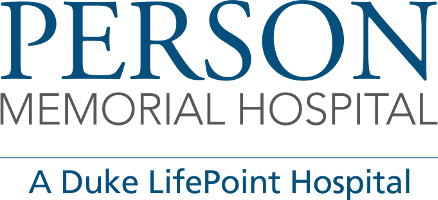An Hour That Could Impact a Lifetime
September 24, 2020
By Lindsay Atkinson, Person Memorial Hospital Chief Nursing Officer
Our daily schedules can be tough to juggle, especially when there is that “one more thing” to fit in. Especially now, when we have a new set of COVID-19-related challenges to navigate, like video work calls, shifting school schedules, and more. But if you’re a woman age 40 or older, there’s one extra thing you should make time for – an annual mammogram. It’s one hour, once a year, that could save your life.
According to the Centers for Disease Control and Prevention (CDC), about 250,000 women are diagnosed with breast cancer each year in the U.S., and approximately 42,000 women die from the disease annually. Most breast cancer cases happen in women 50 and older, but younger women are not immune. About 11 percent of new U.S. cases occur in women younger than 45. It is the second leading cause of cancer death among all women and the leading cause of cancer death among Hispanic women, with Black women having a higher rate of dying from breast cancer than white women.
A mammogram is a simple, routine screening – about one hour, once a year – that helps detect breast cancer earlier than waiting for symptoms to appear. It is an essential annual exam because the early detection of breast cancer is vital in fighting it. Some women with breast cancer have no risk factors and no medical history of cancer, and some don’t have any symptoms. A mammogram can detect breast cancer before symptoms show. Early detection can make for a more comfortable and more effective treatment if cancer is discovered during the screening.
Annual mammograms are recommended for women 40 and older, but you may need to begin yearly screenings sooner if you are at higher risk. Some risk factors include genetic mutations, such as having dense breasts, specific reproductive histories, being overweight after menopause, a family history of breast and ovarian cancer, a personal history of radiation therapy or hormone replacement therapy, an account with the drug diethylstilbestrol (DES) and a lack of physical activity.
It’s a good idea to talk with your provider about your risks and ask about the best time for you to begin scheduling mammograms.
In addition to annual mammograms for early detection, there are some simple things you can do on your own to help lower your risk for breast cancer. Regular exercise, adequate sleep, healthy eating, limited alcohol intake, and avoidance of chemicals that can cause cancer can reduce your chances.
If you haven’t scheduled your annual mammogram yet or are ready to schedule your first, now is a great time to do so. October is Breast Cancer Awareness Month, an excellent opportunity to brush up on what you know about this disease and what you can do to help fight it – including mammograms.
And while healthcare during COVID-19 may look and feel a little different, you can be assured that Person Memorial Hospital is taking extra steps to ensure a safe environment for your visit. These steps include enhanced cleaning and disinfecting procedures, daily staff screenings, mask requirements, and social distancing in waiting areas.
We’ve all been focused a little more on our health this year and ensuring that we take care of ourselves. An annual mammogram is an essential part of that. It’s one hour, once a year, that could save your life.
If you would like to schedule a mammogram or talk with a doctor about your breast health, visit the “Find a Doctor” tab. For more information on breast cancer and mammograms, visit breastcancer.org and cdc.gov/cancer/breast.
Breast Cancer in Men
Did you know that approximately one out of every 100 diagnosed U.S. breast cancer cases is in a man? While rare, it does happen. According to the CDC, the most common symptoms are a lump or swelling in the breast, redness or flaky skin in the breast, irritation or dimpling of breast skin, nipple discharge, and pulling in of the nipple or pain in the nipple area. While breast cancer treatment is the same for men as for women, risk factors can be a little different. They include older age, genetic mutations, family history of the disease, history of radiation or hormone therapy, Klinefelter syndrome, conditions that affect the testicles, liver disease, and obesity.
Men with a family history of breast or ovarian cancer, or who have a family member with the BRCA1 or BRCA2 gene mutation, should share that information with their provider so that he or she can help guide you on any potential steps for genetic testing and early detection. And living a healthy lifestyle, including maintaining a healthy weight and getting in regular physical activity, can help all men lower their risk for the disease.
